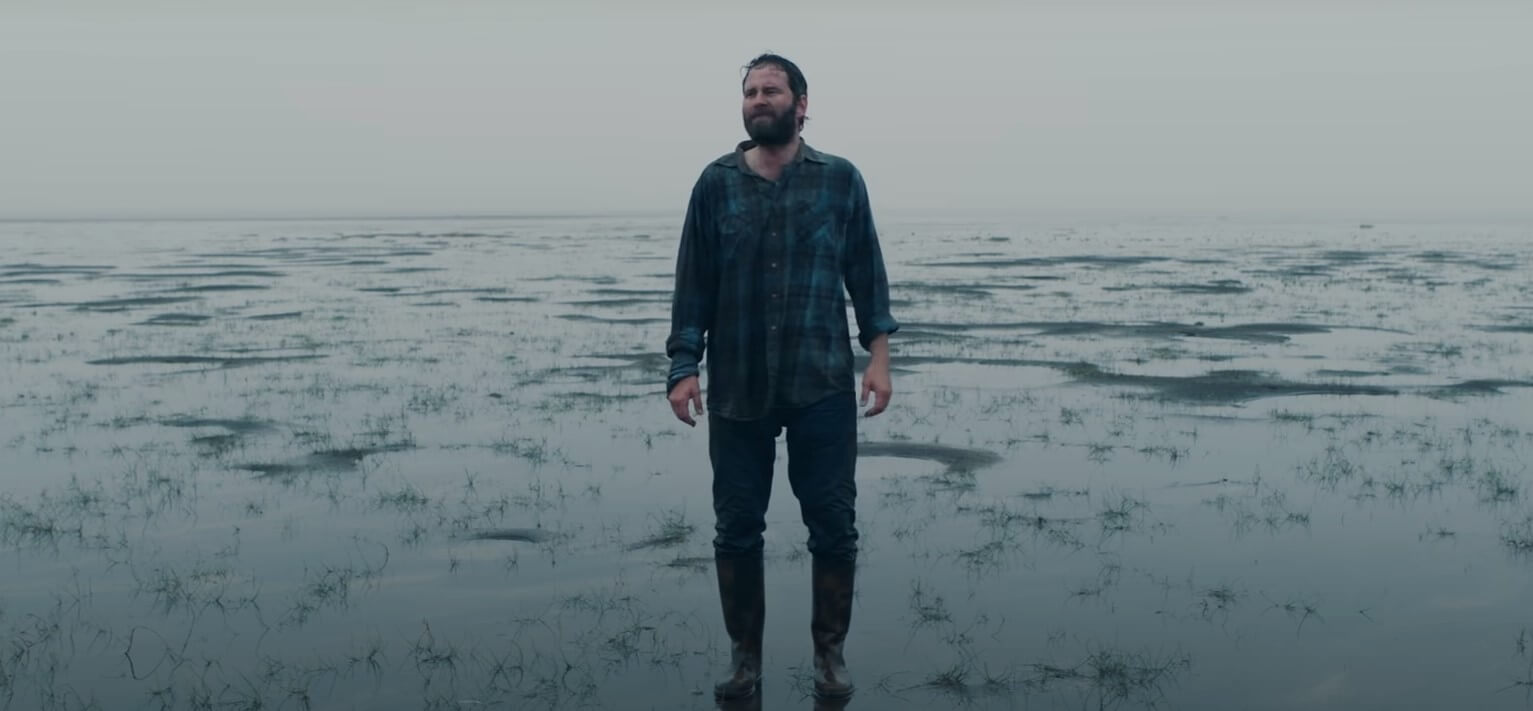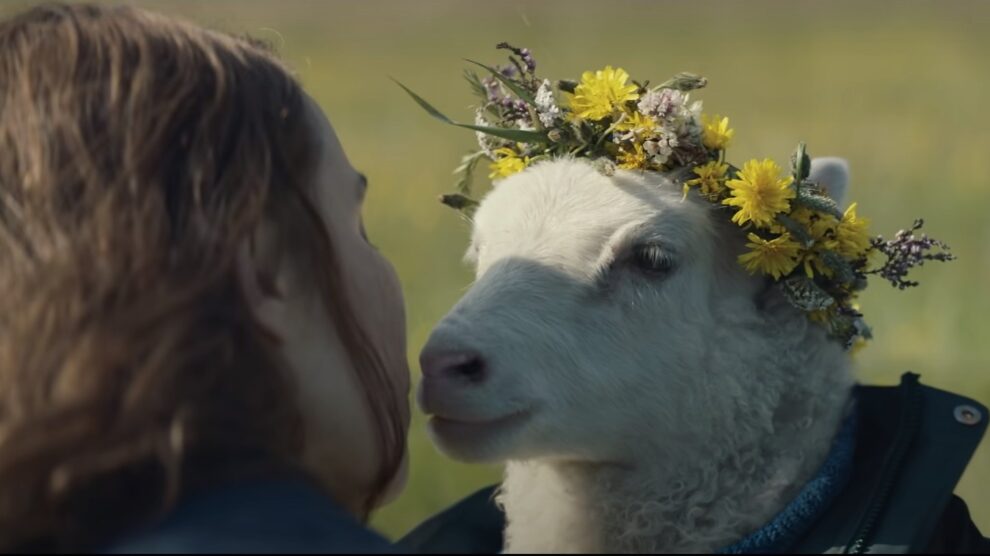Director Vladimar Johannsson brings to us a pastoral Icelandic thriller named Dyrid 2021 (Dyrid in Icelandic meaning ‘The Animal/Lamb’) ebbing around the lands of three different countries with the help of multiple production houses. We bear witness to a melancholic story of a couple mourning the loss of their child and in the soon-to-be future, a certain ominous being lurks on their lands and blesses the couple with an offspring of a strange physiology. This changes their life as they know it. While the story unfolds slowly, we are curious about why we know so little about this Lamb. With the coming of the brother-in-law, certain events of a questionable nature bring about how an ominous end might unfold.

The loss of a child mars any family looking to build a foundation. Somehow, this film takes the idea of a simple nursery rhyme and turns it on its head adding a certain shade of folklore making the film a very intriguing watch. The over-arching theme of the loss of a child brings a grey and soft approach to a bizarre story, somehow not so strange to the actors who bring a powerful presence to the film. Director Vladimar Johannsson with Co-writer Sjorn has written a film that is slow to reveal intense secrets between the characters and bring more colour to the film just as the lamb begins to discover its own story driving the narrative in different directions and making this a valuable debutant Iceland entry for the Best International Feature Film in the 94th Academy Awards.
Plot Summary: Who is Ada’s Surrogate family?
The prologue of the film begins with a heavy-breathing entity that sleuths its way onto the land during the night of Christmas Eve, alerting the horses on the farmland to the apparent terror about to be unleashed. In its early stages, the film touches the dark side with sombre colours. After a series of centre-framed long shots, the film unfolds its premise on an ominous note.

Director Vladimar Johannsson and co-writer Sjorn made sure to split the film up with a three-act structure of screenplay depicting that the film runs word to word the way they envisioned it. These title cards in words slowly fade to introduce us to a Scandinavian tundra that graces a couple living on their own on a large pastoral piece of land. We meet a sheep-farming couple, Maria (starring Noomi Rapace) and her husband, Ingvar Ingvarsdottir, who live on this beautiful remote farm near Reykjavik in the Icelandic mountains that swoon with gloom. Unfriendly to their neighbours or any stranger, the couple looks to live by themselves in a completely calm manner. We observe loss is apparent in some form.
As we follow the couple in their day-to-day life, we observe their pregnant silence and minimal conversation displaying a loss made prematurely. This hum of silence continues till a certain ewe gives birth to a being of the most unusual physiology. The creators do well to create suspense and draw out our discovery of what the being is to help us focus on the couple first. Maria and Ingvar are blessed with a child of a sort. Her eyes spark with confused hope after what they had lost previously. He knew that this was something he could not fight, a moment of happiness. Something he struggled to find for her. While going about their lives normally, events would invite untimely guests and an uninvited presence. Thereafter, the film takes shape as each character must confront truths of their own.

When Ewe Number 3115 gives birth to a hybrid child – half sheep, half man- the couple immediately separate this being from its mother and keep a cradle for it in their bedroom. This makes the biological mother anxious and she begins to panic about whether her offspring is alive or not. She manages to find her way to the window where Ada, Maria and Ingvar’s newly adopted hybrid being, is cradled. Her constant bleating can be heard by the couple and they both try to keep the hapless mother away. However, one day, when both Ingvar and Maria are on the fields catering to their land individually, they leave Ada alone. When they both return, Ada goes missing making the couple thoroughly frantic. Maria and Ingvar run around the land to try and seek out Ada only to find her by her biological mother’s side on the grass. This is where we see that this being is half-man, half-lamb.
The following night Maria has a haunting dream that Ada’s biological mother would take her away in the dead of night. Having suffered the loss of a child previously, sore memories and feelings rise to the surface to take drastic measures to secure her newly adopted offspring. When the biological mother starts bleating for Ada again the following day, Maria takes the animal to the middle of the land somewhere far off from the house with her rifle. She shoots Ada’s biological mother dead and buries her body in an unmarked grave. While she does this, there is a man who is watching her from a wall that overlooks that particular piece of land.
Lamb 2021 Ending Explained: What is Maria hiding from Ingvar?
As part of the Second Act, Petur is Ingvar’s brother and gets dumped by his fellow bandmates on a road. Petur must find his way back to his brother’s house all by himself. At this time, he sees someone shooting a sheep. He learns that something is going on but slowly makes his way to the house. Ingvar meets him and takes him to the kitchen. He sees little Ada and cannot believe his eyes. With this unusual sight, he questions his reality and the casualty by which his brother and sister-in-law have embraced this hybrid being.

Petur slowly hints that he still is attracted to Ada, despite her betrothal to his brother. Somewhere, this tells us there possibly was some history of infidelity. When she keeps turning down his advances, Petur reacts by taking his anger out on Ada by taking her on a walk early in the morning to shoot her dead with Ingvar and Maria’s rifle. However, he has a change of heart and Maria flutters awake out of her sleep to find Ada sleeping with Petur in a chair.
The third act brings the whole film to a crescendo of having each character confront an outside element within a previously secure family unit. This illusion is about to change as both Maria and Ada must confront their inner truth and past to embrace an uncertain new future. During the time that Ada gets close to Maria, Ingvar and Petur as a family unit, it begins to feel something is different. That it is not like them. Maria does her best to make it feel included while trying to physically fend off Petur’s constant sexual advances. Meanwhile, outside the house, Ada has caught a glimpse of creatures that seem to look like their parents who have approached the farm. He runs to the barn and removes the rifle.

One day, when Petur tries to ask why Maria killed Ada’s biological mother, Maria has no answer but tries to lure him with sex to eventually lock him up in the back of the house connected to the storage area. He sleeps the night there, while Ingvar passes out in a drunken state after a whole day of drinking. The next morning, Maria decides to take Petur to the bus stop. She packs his bag for him and they say their goodbyes. Ingvar wakes up to take Ada to where the tractor had stalled earlier to bring it back home after Ada and Petur had gone on a bit of a trip. On the way back home after dropping Petur, Maria checks the house for Ingvar and Ada and finds that both of them are not in the house. In complete panic, she starts looking for them and hears two gunshots in the distance.

She runs towards where the sounds come from to pass the tractor. Meanwhile, Ingvar is shot in the front of the neck and is bleeding profusely on the grass. We see what some would call a Minotaur-like being – Half-man, half-ram. This minotaur walks away with the rifle leaving Ada mourning over Ingvar’s bleeding body. It turns to drop the rifle and pulls Ada away from Ingvar’s grip. Ingvar lies helpless and bleeding and Maria is still to find him. The Minotaur leaves Ingvar with Ada and they slowly disappear into the vast pastoral green lands.
Nowhere 2023 Ending, Explained: Will Pregnant Mia Survive After Being Lost at Sea?
Maria spots Ingvar and cannot believe her husband has bled out on the grass. As the film closes on Maria’s helpless but content face. One can only question what one would do if they adopted a hybrid being as a surrogate child. Would it turn fate around in the most cruel manner? Is the idea of survival applicable? Does this dark tale of woe surrounding an ailing mother bring fear to women thinking of motherhood? This allegorical tale that is synonymous with the nursery rhyme ‘Mary Had a Little Lamb’ is a nervous watch but incredible as a film.













Add Comment